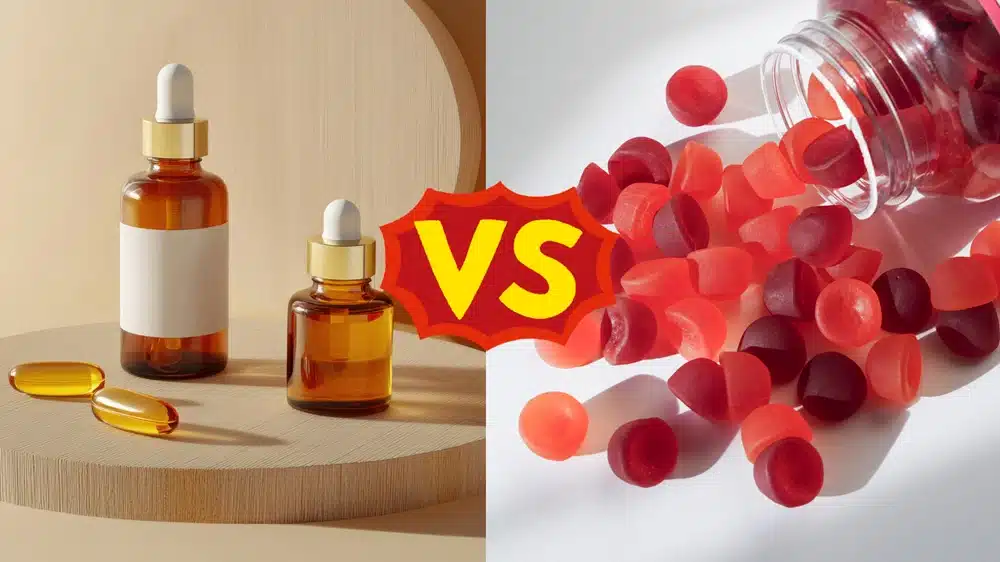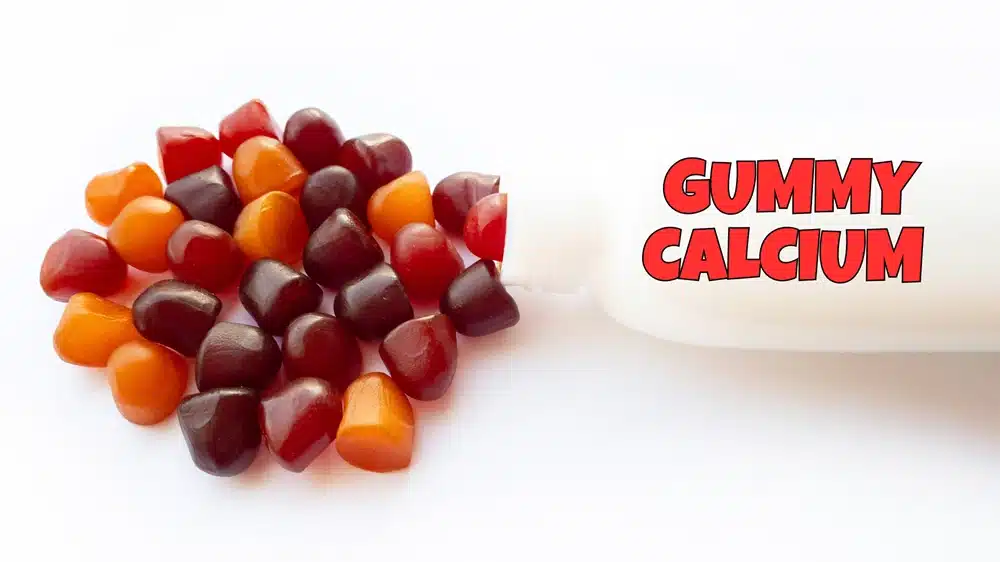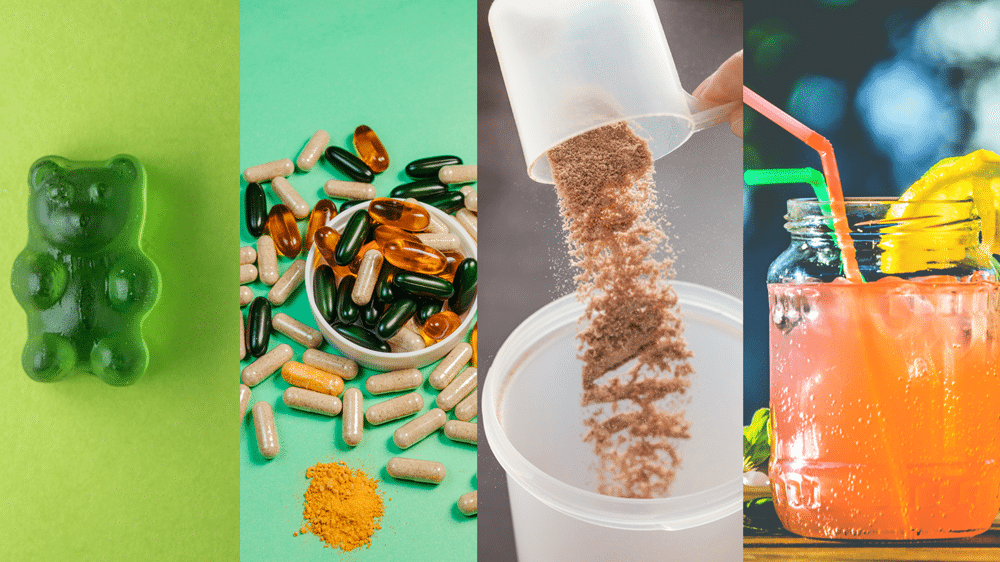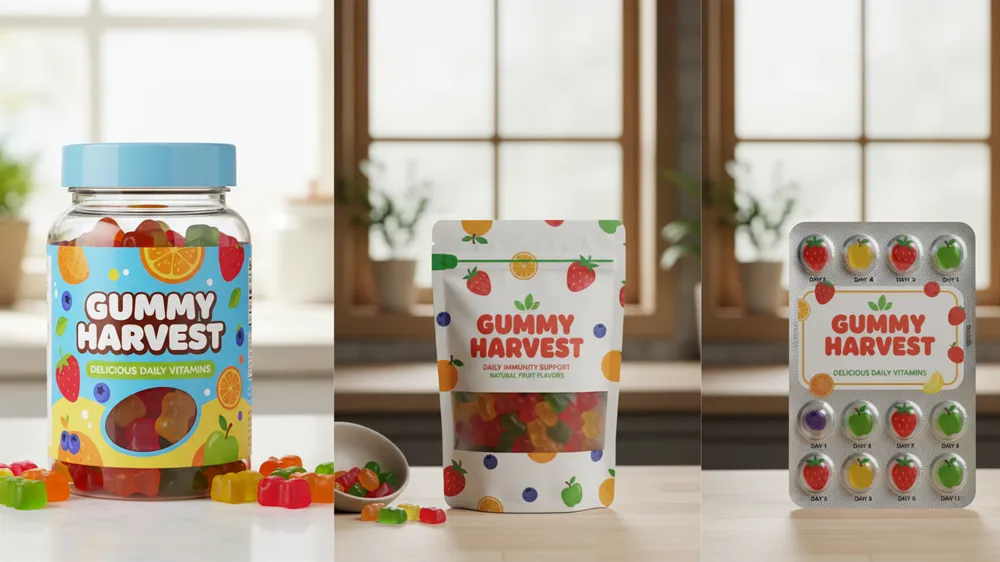
Did you know that improper storage can cause up to 30% nutrient degradation in gummy supplements within just six months? While gummies are one of the most enjoyable supplement formats, their soft texture and high moisture content also make them more sensitive to environmental conditions than capsules or tablets.
Proper storage isn’t only about keeping your gummies tasting fresh—it’s essential for maintaining potency, preventing melting, and reducing microbial risks. Whether you’re a consumer hoping to avoid waste or a brand looking to ensure your product’s shelf-life claims (typically 18–24 months) remain accurate, understanding optimal storage conditions is key.
In this guide, you’ll learn how to store gummy supplements properly, avoid common pitfalls, and tailor your approach for different gummy types. For more background on product selection and formulation.
💡 Quick Tip: Store gummies in a cool, dry, and dark place—never in the bathroom or near kitchen heat sources.
Why Proper Storage Matters for Gummy Supplements
Proper storage isn’t just about convenience—it’s essential for preserving the efficacy, safety, and sensory appeal of gummy supplements. At their core, gummies are hygroscopic (moisture-attracting) due to their sugar and gelling agents, making them vulnerable to environmental stressors. Heat above 25°C (77°F) accelerates chemical breakdown, causing vitamins like C and B12 to lose up to 50% potency through oxidation or hydrolysis. Light exposure, particularly UV rays, further degrades sensitive actives like probiotics or omega-3s, potentially rendering probiotic supplements gummies ineffective for gut health.
Humidity is another culprit: Levels above 60% relative humidity (RH) can cause gummies to absorb moisture, leading to sticking, softening, or mold growth—especially in humid climates. For consumers, this means diminished health benefits and financial loss; a bottle of premium gummy supplements for women might underperform for hormonal support if stored poorly. From a brand perspective, inadequate storage guidelines contribute to higher return rates (up to 15% in retail) and regulatory scrutiny under FDA labeling requirements. By contrast, optimal conditions maintain bioavailability, ensuring gummies deliver promised results. As explored in our Comprehensive Guide to Gummy Supplements (Pillar Page), understanding these factors ties directly into selection—choosing products with robust packaging is half the battle.
The impact extends to sustainability: Proper storage reduces waste, aligning with 2025’s eco-conscious trends in the gummy supplements market. In short, thoughtful storage safeguards your wellness investment, from daily multivitamins to targeted formulas like gummy sleep supplements.
3. Step-by-Step: How to Store Gummy Supplements at Home
Follow these proven steps to ensure your gummies stay potent, fresh, and safe:
Step 1: Choose the Right Container
Always keep gummies in their original sealed packaging or transfer them into airtight glass or BPA-free plastic containers. These help block oxygen and moisture. For long-term storage, vacuum-sealed pouches are ideal.
Step 2: Maintain the Ideal Temperature
Store gummies in a cool, dry place between 15–25°C (59–77°F). Avoid refrigerators unless the label specifically recommends it—condensation during temperature changes can introduce moisture that damages the product.
Step 3: Protect from Light
Keep your gummies away from sunlight and fluorescent lighting. Use opaque containers or store them in dark cabinets to prevent UV-induced nutrient loss.
Step 4: Control Humidity
The ideal relative humidity (RH) is below 60%. In high-humidity regions, use a food-safe desiccant (silica gel pack) in the storage jar to absorb excess moisture.
Step 5: Handle with Care
Always handle gummies with clean, dry hands, and reseal the container immediately after each use. Even short exposure to air can introduce moisture and bacteria.
Special Cases
- Sugar-free gummies: These tend to harden faster—store them slightly warmer (20–25°C).
- Travel storage: Use small airtight travel cases and avoid leaving them in cars or backpacks exposed to heat.
📋 Quick Reference Checklist:
| Step | Key Action | Ideal Condition |
|---|---|---|
| 1 | Use airtight container | Glass or sealed pouch |
| 2 | Keep cool | 15–25°C |
| 3 | Avoid light | Opaque packaging |
| 4 | Control humidity | <60% RH |
| 5 | Handle properly | Clean, dry hands |
| Step | Key Action | Why It Works | Tools Needed |
|---|---|---|---|
| Container Selection | Airtight, opaque packaging | Blocks O2 and UV | Original bottle or glass jar |
| Temperature Control | 15-25°C, no fridge unless specified | Prevents melting/degradation | Thermometer |
| Light Protection | Dark cabinet or foil wrap | Preserves photosensitive actives | Opaque storage box |
| Humidity Management | <60% RH with desiccants | Avoids sticking/mold | Hygrometer, silica packets |
| Handling | Clean hands, immediate reseal | Reduces contamination | None |
Storage Tips for Specific Gummy Types
Not all gummies are created equal—their active ingredients dictate unique storage needs. Tailoring your approach ensures targeted benefits, like sustained energy from gummy supplements for energy or relaxation from sleep aids.
- Kids’ Gummies: These fruit-flavored favorites often contain higher sugars, making them prone to stickiness. Use child-proof, airtight containers in a cool pantry (18-22°C) to maintain shape and appeal—avoid bathrooms where steam softens them. Portion into weekly pill organizers for school bags, but keep away from direct sunlight to protect fun colors and vitamins.
- Probiotic or Omega-3 Gummies: Live cultures and fatty acids demand cooler storage (10-15°C) to preserve viability—refrigeration is often recommended post-opening, but use vacuum-sealed bags to combat condensation. For probiotic supplements gummies, this can retain 90% efficacy over 12 months.
- Beauty and Sleep Aid Gummies: Sensitive to light and heat, store best hair gummy supplements or gummy sleep supplements in dark, stable spots (e.g., nightstand drawer at 20°C). Melatonin or biotin formulas benefit from nitrogen-flushed packaging—check labels for “cool, dry place” icons.
- Bulk or Brand Storage: For wholesalers, climate-controlled warehouses (18-22°C, 40-50% RH) with FIFO (first-in, first-out) rotation prevent stock aging. Invest in pallet racking with moisture barriers for private label gummy supplements.
These variations highlight why reading labels is key—always prioritize manufacturer guidelines.
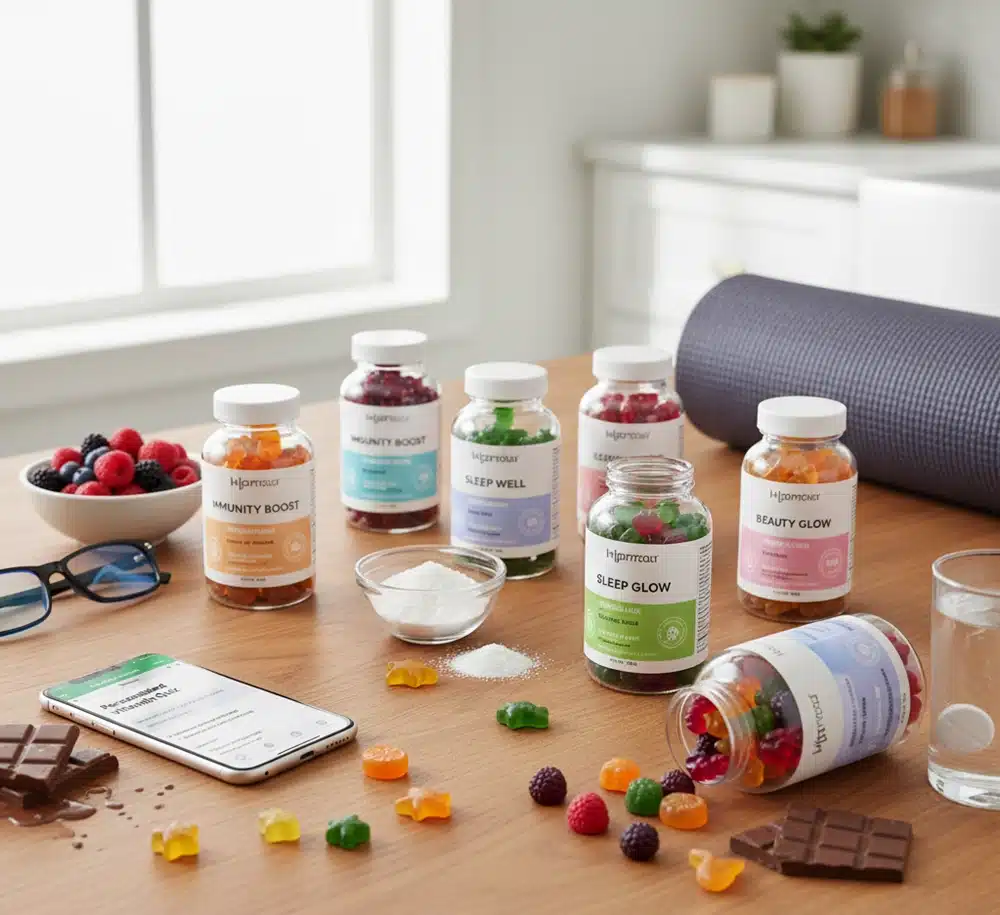
Common Storage Mistakes and How to Avoid Them
Even well-intentioned users make storage slip-ups that compromise gummy quality. Here’s how to sidestep the pitfalls:
- Bathroom or Kitchen Exposure: Steam and heat from showers or ovens cause softening and nutrient loss. Avoid by: Designating a dedicated, stable pantry shelf—test ambient conditions with a cheap thermometer/hygrometer combo.
- Leaving Open to Air: Partial bottles exposed overnight oxidize quickly, especially sugar free gummy supplements. Avoid by: Resealing with clips or transferring to smaller jars; use oxygen absorbers for opened packs.
- Freezing Without Approval: While tempting for longevity, freezing can cause expansion cracks or flavor separation. Avoid by: Only freeze if specified (e.g., some probiotics); thaw at room temp in sealed packs.
- Sunlit Windowsills: UV rays fade colors and degrade actives in gummies supplements for skin. Avoid by: Opt for interior cabinets—simple curtains add protection.
For brands, overlooking these in packaging design leads to consumer complaints. Proactive education, like QR-coded storage tips on labels, builds loyalty.
Shelf Life, Expiration, and Signs of Spoilage
Gummy supplements typically boast a robust shelf life—18-24 months unopened under ideal conditions—but this drops to 6-12 months once opened due to air exposure. Always heed the “best by” date, which indicates peak potency rather than safety expiration. Factors like high-sugar content extend stability, while probiotics shorten it to 9 months.
To check freshness: Inspect for a firm, non-sticky texture and vibrant color. Spoilage red flags include off odors (rancid or fermented), visible mold, excessive hardening, or unusual sliminess—discard immediately to avoid health risks. If in doubt, a quick potency test via home kits (for vitamins) can confirm. Proper storage adds 3-6 months, but rotate stock regularly.
Conclusion and Next Steps
Mastering how to store gummy supplements properly is a simple yet powerful way to maximize their health benefits, minimize waste, and ensure safety—whether for personal use or brand inventory. From airtight containers and cool temps to avoiding common errors like humidity traps, these practices preserve the delicate balance of nutrients and texture that make gummies so appealing.
Ready to implement? Start with a storage audit: Check your current setup against our checklist and adjust accordingly. For bulk or custom needs, partnering with a gummy supplement manufacturer ensures built-in durability. Share your tips in the comments below, or download our free Gummy Storage Checklist PDF. For more on efficacy and selection, explore our Comprehensive Guide to Gummy Supplements. Stay fresh, stay healthy!
FAQs
Resource
- Airtight Containers and Temperature Control: How to Store Your Vitamins (The Right Way)
- Nutrient Degradation Rate (20-30%) and Shelf Life: “Do Vitamins Expire? Safety, Side Effects, and Storage”
- Storage Guidelines: Avoid Humidity in the Kitchen/Bathroom; Keeping It Fresh! How to Store and Preserve Your Vitamins

